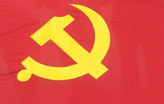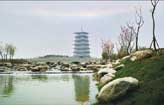Politics
Iran showcases homegrown arms in war games
Updated: 2011-07-05 19:53
TEHRAN - Iran's latest war games have featured the predictable blaze of missile tests and an unexpected peek at underground launch silos. There's one bit of military showmanship, though, that ties it all together: Promoting the Made in Iran label.
Boasting about homegrown defense technology is growing louder as Iran claims UN sanctions cannot blunt efforts to keep pace with America's Gulf allies _ led by Saudi Arabia _ that are awash in Pentagon weaponry and taking an increasingly tough line against Tehran.
The 10-day military exercises _ which wrap up Thursday _ also fit into Iran's narrative of growing self-sufficiency on other fronts including equipment to create nuclear fuel and ambitions to join the club of space-exploring nations.
There's little direct evidence about how much of Iran's military arsenal is now built at home. But many defense analysts note that Iranian engineers have had decades to copy and modify designs first obtained from abroad, including No-Dong missiles from North Korea and air defense batteries based on Russia's S-300 system and America's Hawk missiles purchased before the 1979 Islamic Revolution.
"There's been a long learning curve for Iran," said Theodore Karasik, a regional affairs expert at the Dubai-based Institute for Near East and Gulf Military Analysis. "But compared with five or 10 years ago, Iran seems to have made significant strides. They probably aren't fully self-sufficient for defense needs, but they are moving in that direction."
Iranian officials claim they are already there. Defense Minister Gen. Ahmad Vahidi said the current war games highlight the futility of UN sanctions over Iran's refusal to halt uranium enrichment.
"The war games ... show Iran's great capability in designing, producing and using various kinds of missiles based on domestic knowledge. This showed that the sanctions imposed had no effect on Iran's missile program," Vahidi claimed in comments posted Saturday on sepahnews.com, the official website of Iran's powerful Revolutionary Guard.
Iran says it already has missiles with ranges of up to 1,240 miles (2,000 kilometers) _ putting Israel, U.S. bases in the Gulf and parts of Europe within reach.
The commander of the Revolutionary Guard aerospace force, Amir Ali Hajizadeh, further claimed that Iran "possesses the technology" to make even longer-range missiles, but doesn't plan the upgrades because the country's primary potential targets _ Israel and U.S. bases in the region _ are already in striking distance.
But the biggest potential game changer in the region was the main surprise of the war games so far: State TV showing the first images of underground missile silos. Iran claims the sites can withstand direct attacks and allow for simultaneous mass firings of its Shahab-3 and Sajjil-2 missiles, allegedly capable of hitting Israel and U.S. bases in the region.
Iranian officials say the silos, too, were constructed only with Iranian know-how.
This joins a roster of other military advancements Iran claims as its own, including a guided-missile destroyer that began patrolling the Gulf last year and an attack drone that President Mahmoud Ahmadinejad dubbed the "ambassador of death."
On Tuesday, Iran's first domestically built submarine returned to port after a mission that included reconnaissance in the Red Sea, the semi-official ISNA news agency reported.
"Iran undoubtedly has dedicated significant resources into its own defense industry. That said, however, it's clear they are not there yet," said Paul Rogers, who follows international defense affairs at Bradford University in Britain. "Iran still relies on the help of a few friendly countries."
The main tactical advantage for Iran is widening its range over the Gulf, including the strategic Strait of Hormuz that is the passageway for 40 percent of the world's oil tanker traffic.
On Monday, Iran's state-run Press TV said test firings of new "supersonic" anti-ship missile are expected later this week as part of the military exercises.
It's also another direct challenge to Saudi Arabia and the other Western-allied Gulf nations that host major foreign bases, including a French naval outpost in Abu Dhabi and the US Navy's 5th Fleet in Bahrain.
In many ways, the Arab uprisings have only hardened the Gulf Arab fears over Iran.
They have openly accused Shiite power Iran and its proxy forces, such as Lebanon's Hezbollah, of actively encouraging Shiite dissent in places such as Bahrain, Kuwait and Saudi Arabia. Meanwhile, the Gulf monarchs and sheiks have bonded together to try to snuff out any political opposition that could threaten their rule _ including sending a Saudi-led force to help bail out Bahrain's embattled rulers.
In their view, any cracks in the Gulf establishment by street revolts is a potential gain for Iran. The Gulf's fortress mentality has reached new levels. The Gulf's main political bloc has gone far afield to offer membership to the other royal-ruled nations in the region: Jordan and Morocco.
Kuwaiti Prime Minister Sheik Nasser Al Mohammad Al Sabah opened a tour this week of Gulf neighbors by describing Saudi Arabia as "the rock that shatters the dreams of the enemies" _ an apparent reference to both Iran and opposition groups inspired by the Arab revolts.
"Saudi Arabia has definitely established itself as an alternative to the Arab Spring," said Ehsan Ahrari, a political affairs analyst based in Alexandria, Virginia. "And they have done so quite independently of the United States."
Iran has pushed back, too, with claims that Saudi Arabia and its Gulf allies are pumping up fears over the Islamic Republic as excuses for crackdowns on political dissent. But Tehran also appears pleased to rattle the region.
"We are delighted the West and allies are worried," said Foreign Ministry spokesman Rahmin Mehmanparast in reference to the war games. "When they are not concerned, it means that they are comfortably pursing their interests in the region."

Specials

90th anniversary of the CPC
The Party has been leading the country and people to prosperity.

My China story
Foreign readers are invited to share your China stories.

Green makeover
Cleanup of Xi'an wasteland pays off for ancient city